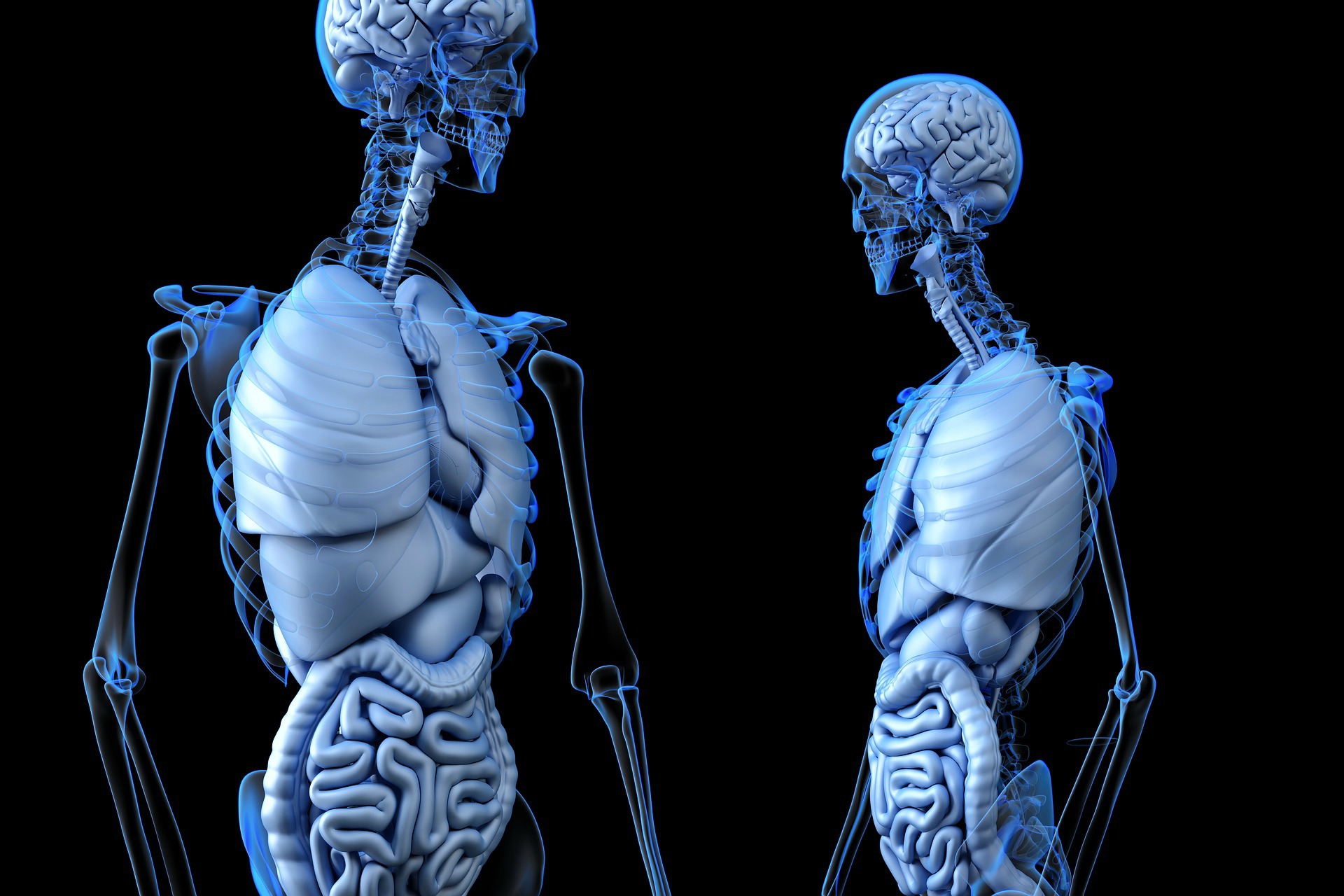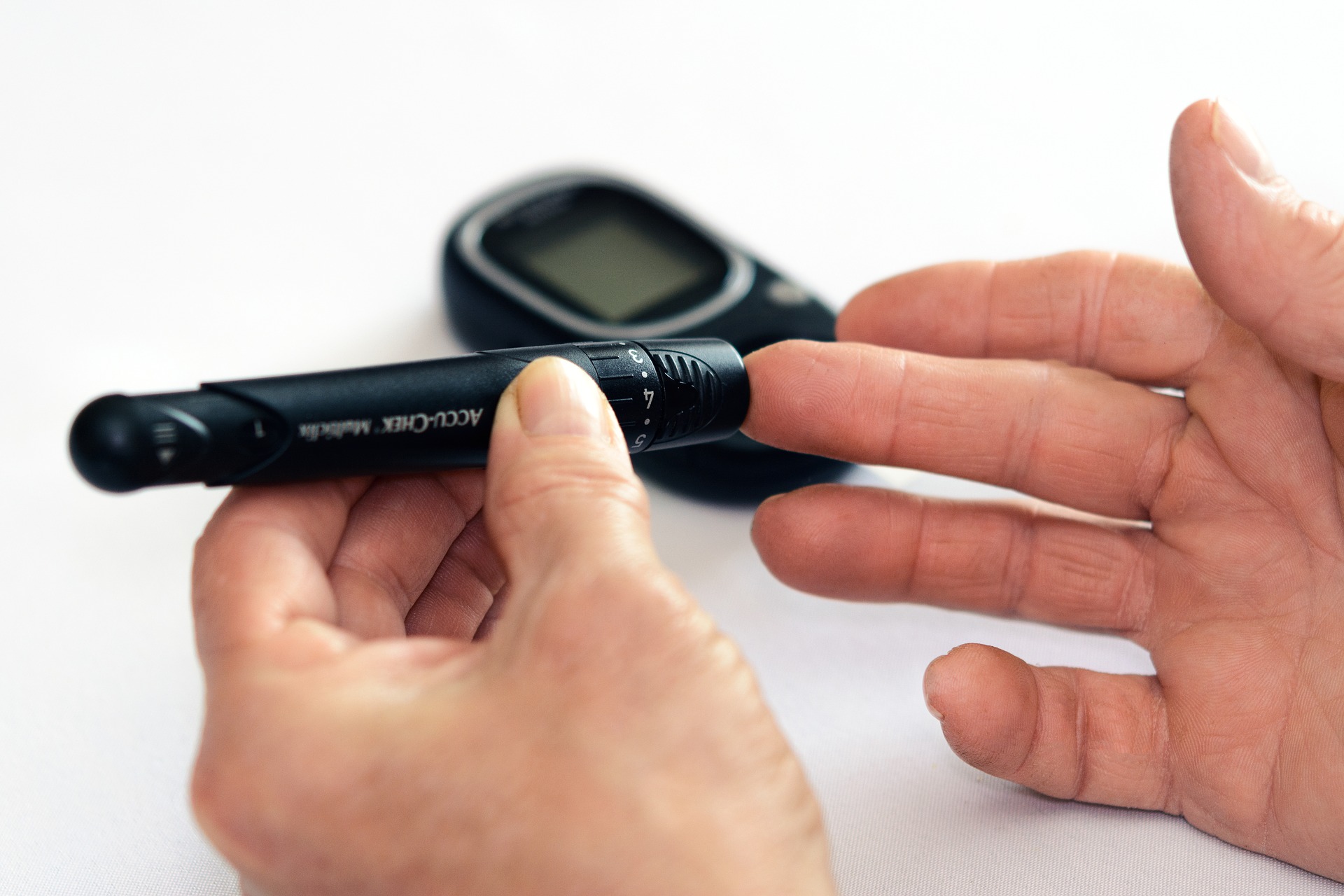Vitamin D – Its Role In Your Health
By Dr. Robert Curtis
(Doctor of Chiropractic, Certified Medical Examiner (U.S. Dept. of Transportation), A.C.E. Certified Health Coach and Fitness Nutrition Specialist)
Published: 11/1/19 (updated 8/4/20)
Time crunch? Save this page for later with Pocket, Instapaper, or Evernote.
Vitamin D has varied roles in the different systems of our bodies, from our digestive system, to our cardiovascular system, to our immune system, to things like mental health, regulation of our blood sugar, cancer resistance, and fertility, along with being a factor in disease processes.
Of course, Vitamin D's most known role relates to healthy bone consistency.
Below, I’ll first discuss what we know about its link to optimal body systems’ health and then will get into what we know about its role in disease processes.
Side note: click here to see my companion article, Vitamin D – The Basics – What’s Your Status?, where I address its different forms, sources, and what good levels are.
Vitamin D’s Link to Optimal Systems Health
 Vitamin D plays a role in many systems of our bodies. (image source at end of article)
Vitamin D plays a role in many systems of our bodies. (image source at end of article)
Concerning nervous system health
Cells in key areas of the brain have receptors for vitamin D.
Vitamin D has been shown to play a role in circadian rhythms and sleep, to affect the growth of nerve cells, and to have impacts on the developing brain. [1]
In regard to heart health
An indication of the importance of vitamin D and heart health is more evident in its lack than presence.
Accordingly, a number of studies report low blood levels of vitamin D are linked with heart disease. [2]
Pertaining to control of blood sugar
Again here, as with heart health, vitamin D's role and importance is more revealed in its lacking.
In relation to this, an analysis of a group of studies, showed that in a small subset of study participants, with uncontrolled blood sugar management, benefit was obtained from additional vitamin D. [3]
 Sugar levels are revealed in the blood. Vitamin levels can be, too. (image source at end of article)
Sugar levels are revealed in the blood. Vitamin levels can be, too. (image source at end of article)
In relation to bone health
This is the most known area of vitamin D activity and impact.
As bones are living tissue and constantly reforming based on the stresses we put on them, their metabolism is dependent on the flow of various factors, including an important role for vitamin D.
In a primary role, vitamin D helps the body absorb calcium more efficiently, with calcium being a key mineral for our bones' strength.
Additionally, vitamin D collaborates with certain hormones to insure calcium remains at optimum levels in the blood, going so far as to prioritize calcium amounts in the blood over bones, as necessary, as calcium is also crucial in things like muscle contraction, including the heart.
When there is enough calcium in the blood, the overage is stored in the bones.
If calcium blood levels fall, the body will respond to raise them by first activating vitamin D stored in the liver to up the absorption of calcium from food and then by pulling calcium out of the bones.
One review of multiple studies showed an association with sufficient levels of vitamin D in our blood (the 25(OH)D form) and a higher degree of bone density though the authors noted that amount levels correlating to this continued to be an unsettled topic. [4]
Concerning fertility
Vitamin D seems to help improve the motility of sperm cells imparting a positive effect on male fertility.
There are studies correlating better pregnancies with normal vitamin D levels.
These two points are drawn from a recent scientific review of numerous vitamin D studies. [5]
The Vitamin D Link to Disease Processes
 Like a burning fire, inflammation, a common root of disease processes.. (image source at end of article)
Like a burning fire, inflammation, a common root of disease processes.. (image source at end of article)
In relation to inflammation and immune function, including allergy
Numerous studies of immune-related conditions like atopic dermatitis and rheumatoid arthritis have shown a link to low levels of vitamin D.
In the lab, vitamin D has shown indications of “anti-inflammatory” and “antioxidant” properties with vitamin D reducing an inflammatory molecule in the blood of mice [6], although not all studies agree.
And in a recent 2019 randomized, double-blind, placebo-controlled study of 1,500 human subjects over the course of a year, no inflammatory reduction benefit was shown, and in the case of those with low vitamin D status, less than 20 ng/mL at the start of the study, they developed an increase in a commonly measured inflammatory marker, hsCRP (high-sensitivity C-reactive protein). [7]
Though in the case of food allergies, some researchers think vitamin D, due to its effects on the immune system, may play a helpful role.
This ties into a handful of smaller studies pointing out that with low vitamin D levels there is a notable increased risk for allergies to certain foods, but it was also asserted that more research was necessary. [8, 9]
Vitamin D’s role in digestive diseases
Dietary fat is a needed component for the absorption of vitamin D (one of the fat soluble vitamins) thus, those who don’t absorb sufficient fat run the risk of accordingly having lowered levels of vitamin D, assuming their sun exposure is inadequate, otherwise.
Such persons can be those with celiac disease [10], inflammatory bowel diseases (IBD) like Crohn’s & colitis, or those who’ve undergone gastric bypass surgery. [11, 12]
This ties in with the flip side of these disease challenges in that good vitamin D levels are observed in those with healthy guts (good gut microbiome status).
Sub-optimal vitamin D has been associated with poorer gut microbiome status, inflammation of the gut, and gut related diseases such as IBD and colon cancer, whereas greater vitamin D amounts have been shown to be helpful in relieving colitis.
In one study a degree of colitis relief was achieved by increasing vitamin D via supplementation. [13]
As it relates to bone diseases
When we don’t get enough vitamin D (and calcium) regularly, bones can become weak and brittle.
So, getting
sufficient amounts of vitamin D and calcium regularly are necessary to
maintain bone health, and severe vitamin D deficiency can lead to
weakened bone diseases like rickets in children and osteomalacia in
adults.
Osteoporosis (loss of bone mass) can occur over time as
well with general insufficiency (as opposed to a severe deficiency) of
vitamin D, and calcium, too. [14]
Pertaining to heart disease
A recent review of several studies indicated that higher levels of vitamin D in the blood may reduce blood pressure and the risk of heart disease by a small amount.
Overall though, the authors in this assessment concluded that further study was needed as results were not sufficiently clear. [15]
In view of diabetes
An association has been shown in people with pre-diabetes having higher levels of insulin resistance along with low vitamin D levels. [16]
Low levels may also increase the risk of developing diabetes. [17]
With respect to neurological and mental diseases
Concerning illnesses, like depression, a growing body of
evidence is demonstrating a connection to low levels of vitamin D. [18, 19]
In regard to an increasing risk for developing either
Alzheimer’s or Parkinson’s diseases, a link is shown with Vitamin
D at low levels. [20]
Concerning cancer
It’s not just colon cancer that’s associated with low levels of vitamin D. Higher levels of vitamin D are associated with lower risk for prostate, and breast cancers.
In the lab, cancer cells don’t seem to do as well when exposed to higher levels of vitamin D. They don’t divide or invade other tissues as well, and they seem to die easier.
It’s unclear whether supplementing with vitamin D would reduce the risks of cancer in people. [21]
Summation and Final Thoughts
Vitamin D has many health-promoting roles in the body. Most of the evidence is for bone health, but it’s also associated with a healthy immune system, digestive system, heart health, mental health, blood sugar regulation, fertility, and resistance to cancer.
However, the strongest evidence for what vitamin D deficiency causes involves rickets and osteomalacia. The rest of the conditions have some evidence, but it’s not clear to what extent they’re caused by vitamin D deficiency/insufficiency, or what other factors also come into play.
In the realm of a plant-based diet, vitamin D has a crucial role, as with any diet – and with sunlight, is readily produced, and otherwise can be further obtained in fortified foods or supplements if getting enough sun exposure is problematic – best determined in consultation with your primary health care provider.
Overall, testing your vitamin D levels allows you to at least roughly determine what your status is.
When testing, keeping in mind the time of year is important as well, as sun intensity is greatest in late spring on into the beginning of summer, then diminishing gradually, falling to its lowest point late fall on into the beginning of winter.
Accordingly, you would get more vitamin D production in your system during the period of greater sun intensity, and would likely register higher amounts in your test during that time, and typically the lowest levels would result during the late fall into early winter.
Click here to see my companion article, Vitamin D – The Basics – What’s Your Status?, where I address its different forms, sources, and what good levels are.
Article References:
1. Pet, M.A. & Brouwer-Brolsma, E.M. (2016). The Impact of Maternal Vitamin ,D Status on Offspring Brain Development and Function: a Systematic Review. Adv Nutr. 7(4):665-78. doi: 10.3945/an.115.010330.
https://www.ncbi.nlm.nih.gov/pmc/articles/PMC4942857/
2. Zittermann A1, Gummert JF,
Börgermann J. Vitamin D deficiency and mortality. Curr Opin Clin Nutr
Metab Care. 2009 Nov;12(6):634-9. doi: 10.1097/MCO.0b013e3283310767.
https://www.ncbi.nlm.nih.gov/pubmed/19710612
3. Krul-Poel YH1, Ter Wee MM2,
Lips P2, Simsek S3. MANAGEMENT OF ENDOCRINE DISEASE: The effect of
vitamin D supplementation on glycaemic control in patients with type 2
diabetes mellitus: a systematic review and meta-analysis. Eur J
Endocrinol. 2017 Jan;176(1):R1-R14. Epub 2016 Aug 2.
https://www.ncbi.nlm.nih.gov/pubmed/27484453
4. Christodoulou, S., Goula, T.,
Ververidis, A., & Drosos, G. (2013). Vitamin D and Bone Disease.
BioMed Research International, 2013, 396541.
http://doi.org/10.1155/2013/396541
https://www.ncbi.nlm.nih.gov/pmc/articles/PMC3591184/
5. Cito G1, Cocci A2, Micelli E3,
Gabutti A4, Russo GI5, Coccia ME6, Franco G7, Serni S2, Carini M2,
Natali A2. Vitamin D and Male Fertility: An Updated Review. World J Mens
Health. 2019 May 17. doi: 10.5534/wjmh.190057. [Epub ahead of print]
https://www.ncbi.nlm.nih.gov/pubmed/31190482
6. Wang, Q., He, Y., Shen, Y.,
Zhang, Q., Chen, D., Zuo, C., … Yu, Y. (2014). Vitamin D Inhibits COX-2
Expression and Inflammatory Response by Targeting Thioesterase
Superfamily Member 4. The Journal of Biological Chemistry, 289(17),
11681–11694. http://doi.org/10.1074/jbc.M113.517581
https://www.ncbi.nlm.nih.gov/pmc/articles/PMC4002078/
7. Karen H Costenbader, Lindsey A MacFarlane, I-Min Lee, Julie E Buring, Samia Mora, Vadim Bubes, Gregory Kotler, Carlos A Camargo, Jr., JoAnn E Manson, Nancy R Cook. Effects of One Year of Vitamin D and Marine Omega-3 Fatty Acid Supplementation on Biomarkers of Systemic Inflammation in Older US Adults. Clinical Chemistry, Volume 65, Issue 12, 1 December 2019, Pages 1508–1521, Published: 01 December 2019
https://doi.org/10.1373/clinchem.2019.306902
8. Rudders, S.A. & Camargo,
C.A.Jr. (2015). Sunlight, vitamin D and food allergy. Curr Opin Allergy
Clin Immunol. 15(4):350-7. doi: 10.1097/ACI.0000000000000177.
https://www.ncbi.nlm.nih.gov/pubmed/26110686
9.
Du Toitc, G., Foongc, R,-X.M. & Lack, G. (2016). Prevention of food
allergy – Early dietary interventions. Allergology International.
65(4), 370–377. DOI: https://doi.org/10.1016/j.alit.2016.08.001
http://www.allergologyinternational.com/article/S1323-8930(16)30106-X/fulltext#sec4
10. Grace-Farfaglia, P. (2015).
Bones of Contention: Bone Mineral Density Recovery in Celiac Disease—A
Systematic Review. Nutrients, 7(5), 3347–3369.
http://doi.org/10.3390/nu7053347
https://www.ncbi.nlm.nih.gov/pmc/articles/PMC4446755/
11.
Narula, N. & Marshall, J.K. (2012). Management of inflammatory
bowel disease with vitamin D: beyond bone health. J Crohns Colitis.
6(4):397-404. doi: 10.1016/j.crohns.2011.10.015.
https://linkinghub.elsevier.com/retrieve/pii/S1873-9946(11)00313-8
12.
Del Pinto, R., Ferri, C., & Cominelli, F. (2017). Vitamin D Axis in
Inflammatory Bowel Diseases: Role, Current Uses and Future
Perspectives. International Journal of Molecular Sciences, 18(11), 2360.
http://doi.org/10.3390/ijms18112360
https://www.ncbi.nlm.nih.gov/pmc/articles/PMC5713329/
13.
Meeker, S., Seamons, A., Maggio-Price, L., & Paik, J. (2016).
Protective links between vitamin D, inflammatory bowel disease and colon
cancer. World Journal of Gastroenterology, 22(3), 933–948.
http://doi.org/10.3748/wjg.v22.i3.933
https://www.ncbi.nlm.nih.gov/pmc/articles/PMC4716046/
14. Reid, I.R. (2016). What
diseases are causally linked to vitamin D deficiency? Arch Dis Child.
101(2):185-9. doi: 10.1136/archdischild-2014-307961.
https://www.ncbi.nlm.nih.gov/pubmed/26203122
15. Legarth C1, Grimm D2, Wehland
M3, Bauer J4, Krüger M5. The Impact of Vitamin D in the Treatment of
Essential Hypertension. Int J Mol Sci. 2018 Feb 3;19(2). pii: E455. doi:
10.3390/ijms19020455.
https://www.ncbi.nlm.nih.gov/pubmed/29401665
16. Nur-Eke R, Özen M, Çekin AH.
Pre-Diabetics with Hypovitaminosis D Have Higher Risk for Insulin
Resistance. Clin Lab. 2019 May 1;65(5). doi:
10.7754/Clin.Lab.2018.181014.
https://www.ncbi.nlm.nih.gov/pubmed/31115227
17.
Lucato P1, Solmi M2, Maggi S3, Bertocco A1, Bano G1, Trevisan C1,
Manzato E1, Sergi G1, Schofield P4, Kouidrat Y5, Veronese N3, Stubbs B6.
Low vitamin D levels increase the risk of type 2 diabetes in older
adults: A systematic review and meta-analysis. Maturitas. 2017
Jun;100:8-15. doi: 10.1016/j.maturitas.2017.02.016. Epub 2017 Mar 21.
https://www.ncbi.nlm.nih.gov/pubmed/28539181
18. Kjærgaard, M., Waterloo, K., Wang, C.E., Almås, B., Figenschau, Y., Hutchinson, M.S., Svartberg, J. & Jorde, R. (2012). Effect of vitamin D supplement on depression scores in people with low levels of serum 25-hydroxyvitamin D: nested case-control study and randomised clinical trial. Br J Psychiatry. 201(5):360-8.
http://bjp.rcpsych.org/content/201/5/360.long
19. Berk, M., Williams, L. J., Jacka, F. N., O’Neil, A., Pasco, J. A., Moylan, S., … Maes, M. (2013). So depression is an inflammatory disease, but where does the inflammation come from? BMC Medicine, 11, 200. http://doi.org/10.1186/1741-7015-11-200
https://www.ncbi.nlm.nih.gov/pmc/articles/PMC3846682/
20. Rimmelzwaan, L.M., van Schoor, N.M., Lips, P., Berendse, H.W. & Eekhoff, E.M. (2016). Systematic Review of the Relationship between Vitamin D and Parkinson's Disease. J Parkinsons Dis. 6(1):29-37.
https://www.ncbi.nlm.nih.gov/pmc/articles/PMC4927872/
21. Pilz, S., Grübler, M., Gaksch, M., Schwetz, V., Trummer, C., Hartaigh, B.Ó., Verheyen, N., Tomaschitz, A. & März, W. (2016). Vitamin D and Mortality. Anticancer Research. 36(3), 1379-1387.
http://ar.iiarjournals.org/content/36/3/1379.long
Images:
1. Vitamin D plays a role in many systems of our bodies. Image by slon pics from Pixabay (CCO license)
2. Sugar levels are revealed in the blood. Vitamin levels can be, too. Image by Photo Mix from Pixabay (CCO license)
3. Inflammation, a common root of disease processes. Image by Voltordu from Pixabay (CCO license)





